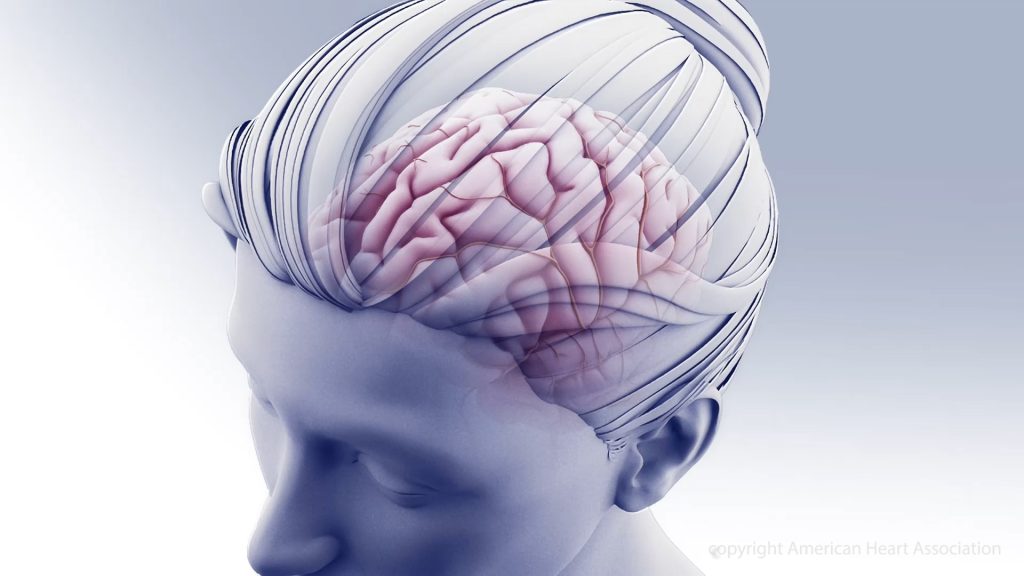Maintaining Heart Health may Reduce Cerebral Small Vessel Disease

Maintaining excellent cardiovascular health may lower the risk for abnormalities in the small vessels of the brain, a new study suggests.
Scientists aren’t sure what causes the condition, known as cerebral small vessel disease, or CSVD. Previous research shows CSVD contributes to about half of dementia cases, a quarter of clot-caused strokes and most bleeding strokes.
For the new study, researchers looked at data from 3067 older adults in Lishui, China. The study team ranked each person’s cardiovascular health as “poor,” “intermediate” or “ideal” based on three medical factors (blood pressure, cholesterol and blood sugar) and four modifiable behaviours (not smoking, maintaining a healthy weight, eating healthy and being physically active).
Next, they compared cardiovascular health to brain MRI scans that looked for signs of CSVD, such as cerebral microbleeds – remnants of blood that has leaked out of small vessels – and lesions called white matter hyperintensities.
The study found participants with ideal cardiovascular health had 26% lower odds of having CSVD than those with poor cardiovascular health. The research was published Wednesday in the journal Stroke.
“The findings were somewhat expected, since a healthy lifestyle can benefit both the arteries and the brain,” said study co-author Yuesong Pan, a researcher of neurological diseases at Capital Medical University’s Beijing Tiantan Hospital in China.
“This suggests that in clinical practice, the target is to attain an ideal (cardiovascular health) score, not just an intermediate score,” he said. “Patients can use a simple self-measuring scale to adjust their lifestyle, assess the risk of CSVD and reduce their CSVD burden.”
Researchers used the American Heart Association’s tool for scoring cardiovascular health that was recently updated to add sleep duration as an eighth factor for ideal heart and brain health. Pan suggested people use the tool, now known as Life’s Essential 8, to find out their risk for cardiovascular disease.
Dr. José Rafael Romero, a neurologist who wasn’t involved in the research, said CSVD is important because “it does not have a specific treatment and it is such a strong contributor to stroke and dementia, which are epidemic conditions around the world.”
In 2020, 7.1 million people worldwide died of stroke, according to AHA statistics. In the US, stroke ranks fifth among all causes of death, with more than 160 000 deaths in 2020, based on data from the Centers for Disease Control and Prevention.
Alzheimer’s disease – the main cause of dementia – is the seventh-leading cause of death in the US. An estimated 6.5 million people age 65 and older have the condition, according to the Alzheimer’s Association. That number is expected to reach 12.7 million by 2050.
“The study is important because it gives additional information on how to lower CSVD risk, which may have an enormous public health benefit,” said Romero, an associate professor of neurology at Boston University School of Medicine who wrote an editorial published alongside the new research.
“It shows that we shouldn’t stop halfway. We should aim for achieving all the goals and achieving ideal cardiovascular health.”
Pan said the study was limited by incomplete dietary data and because it didn’t follow participants over a period of time. He called for larger, long-term observational studies to learn more about the relationship between CSVD and cardiovascular disease risk factors.
Romero said randomised clinical studies are needed to see whether controlling cardiovascular disease risk does indeed lower small vessel disease risk. He also called for future studies to evaluate the usefulness of screening high-risk people for CSVD using brain MRI.
In general, he said, health care professionals and health organisations need to come up with a clearer plan on how to fight CSVD.
“Often, there is no dedicated effort to control risk factors and track this consistently, particularly in patients that have high risk,” Romero said. “We really need to develop programs for effective and sustained implementation of these guidelines for preventing cardiovascular disease.”
Source: American Heart Association



